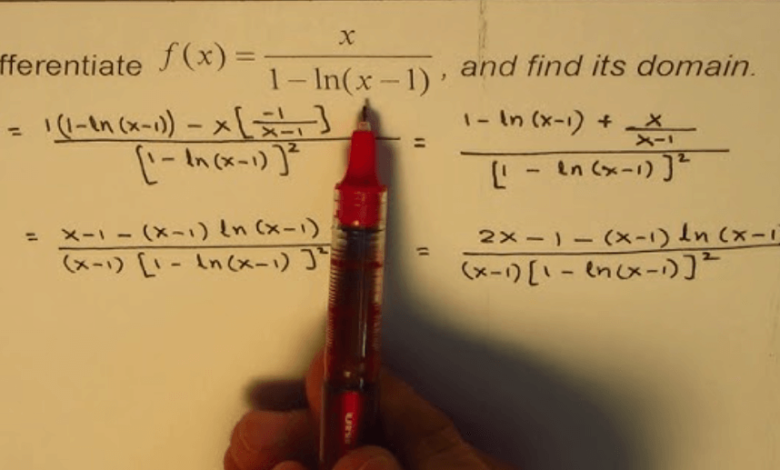What Is a Derivative in Calculus?

At the heart of calculus lies the concept of the derivative, which is essential for understanding how quantities change over time or space. If you’ve ever wondered what is a derivative in calculus, this article is designed to provide a detailed, intuitive explanation of the topic—complete with real-world examples and applications.
Understanding the Basics
To put it simply, a derivative in calculus measures how a function changes as its input changes. It answers questions like: How fast is a car accelerating? How steep is a hill at a certain point? How does a population grow over time?
So what is a derivative in calculus Formally, it is the instantaneous rate of change of a function with respect to one of its variables. In most cases, this variable is time or space.
The Concept of a Slope
For a straight line, the slope is calculated as:
But what if the line is not straight—say, a curve? The slope is no longer constant. That’s where derivatives come into play: they give the slope of the tangent line to the curve at a particular point.
Formal Definition Using Limits
f′(x)=limh→0f(x+h)−f(x)hf'(x) = \lim_{h \to 0} \frac{f(x+h) – f(x)}{h}
This limit, if it exists, gives the instantaneous rate of change of ff at xx. Here, hh is a small increment, and the expression gives the slope of the secant line between xx and x+hx + h.
Interpreting Derivatives
Once you understand what is a derivative in calculus, it’s easier to interpret its meaning in different contexts:
- In physics, the derivative of position with respect to time is velocity, and the derivative of velocity is acceleration.
- In economics, it may represent the rate at which cost, revenue, or profit is changing.
- In biology, derivatives can describe growth rates of populations or chemical reactions.
See also: Attracting Top Talent for Long-Term Success
Notation of Derivatives
There are several notations commonly used to denote derivatives:
- Leibniz Notation:
dydx\frac{dy}{dx}
Used to represent the derivative of yy with respect to xx.
2. Prime Notation:
f′(x)f'(x)
Used when working with functions like f(x)f(x).
3. D-Notation (Euler’s):
Df(x)Df(x)
Used especially in higher mathematics.
All these notations convey the same concept and are used depending on context and preference.
Rules of Differentiation
To efficiently compute derivatives, calculus provides a set of rules known as differentiation rules:
- Constant Rule
ddx[c]=0\frac{d}{dx}[c] = 0
2. Power Rule
ddx[xn]=nxn−1\frac{d}{dx}[x^n] = nx^{n-1}
3. Constant Multiple Rule
ddx[cf(x)]=c⋅f′(x)\frac{d}{dx}[cf(x)] = c \cdot f'(x)
4. Sum and Difference Rules
ddx[f(x)±g(x)]=f′(x)±g′(x)\frac{d}{dx}[f(x) \pm g(x)] = f'(x) \pm g'(x)
5. Product Rule
ddx[f(x)g(x)]=f(x)g′(x)+f′(x)g(x)\frac{d}{dx}[f(x)g(x)] = f(x)g'(x) + f'(x)g(x)
6. Quotient Rule
ddx[f(x)g(x)]=f′(x)g(x)−f(x)g′(x)[g(x)]2\frac{d}{dx}\left[\frac{f(x)}{g(x)}\right] = \frac{f'(x)g(x) – f(x)g'(x)}{[g(x)]^2}
7. Chain Rule
ddx[f(g(x))]=f′(g(x))⋅g′(x)\frac{d}{dx}[f(g(x))] = f'(g(x)) \cdot g'(x)
These rules form the backbone of differential calculus and make it easier to differentiate complex functions.
Example: Derivative of a Polynomial
Let’s take a basic example:
f(x)=3×2+2x+1f(x) = 3x^2 + 2x + 1
This tells us that the rate of change of the function at any point xx is 6x+26x + 2.
Graphical Interpretation
This visual insight is crucial in understanding the behavior of functions, finding maximum or minimum values, and analyzing trends.
Applications of Derivatives
Understanding what is a derivative in calculus is not just theoretical—it has powerful real-world implications:
- Physics: Modeling motion and forces.
- Biology: Predicting population growth or reaction rates.
- Economics: Analyzing cost minimization and profit maximization.
- Medicine: Monitoring rates of change in blood sugar, heart rate, etc.
In short, derivatives are used in virtually every scientific and quantitative field.
Higher-Order Derivatives
Derivatives can be taken more than once. The second derivative, denoted f′′(x)f”(x) or d2ydx2\frac{d^2y}{dx^2}, measures the rate of change of the rate of change.
- First Derivative: Indicates slope or velocity.
- Second Derivative: Indicates concavity or acceleration.
Conclusion
So, what is a derivative in calculus? It is a mathematical tool that captures how a function changes at a specific point. By understanding derivatives, we gain the ability to model and predict behaviors in a wide range of disciplines—from physics and economics to engineering and biology.
Learning derivatives opens doors to more advanced areas of calculus such as integration, differential equations, and multivariable calculus. For students, researchers, and professionals alike, mastering derivatives is an essential step toward mathematical literacy and problem-solving power.






